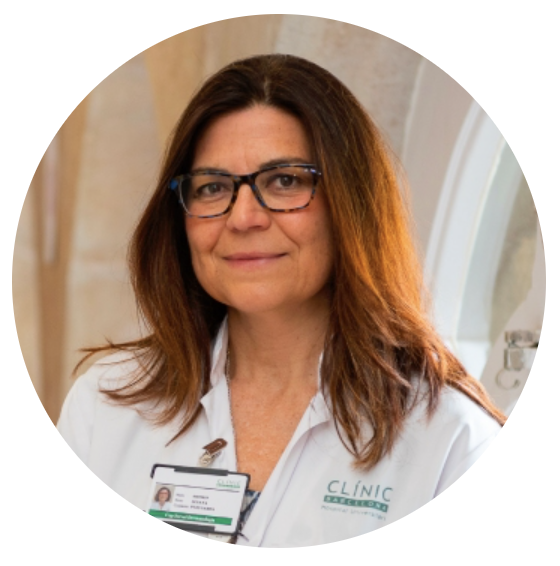13 de June de 2025
How to prevent skin cancer and melanoma

The skin cancer, especially melanoma, is one of the most aggressive forms of this disease, but also one of the easiest to prevent if detected early. Do you know how to prevent skin cancer? Or what skin cancer spots look like and when to worry about them? On the occasion of the European Day for the Prevention of Skin Cancer, this post provides clear and practical guidance on how to avoid skin cancer, how to identify the first signs, and what you can do to protect your health starting today.
How to prevent skin cancer?
Skin cancer prevention relies on minimizing damage caused by ultraviolet radiation. Sun exposure, especially when it causes burns, is the main avoidable risk factor.
“We must avoid sunburn at all costs”
Dr. Susana Puig, Head of the Dermatology Department at Hospital Clínic de Barcelona and dermatologist at barnaclínic+
To prevent skin cancer and melanoma:
-
Avoid sun exposure between 12 PM and 4 PM.
-
Wear a hat, sunglasses, and protective clothing.
-
Exercise outdoors in the morning or late afternoon.
-
Use a high-SPF sunscreen (skin cancer cream) on exposed areas, even on cloudy days.
-
Do not use tanning beds.
The best cream to prevent skin cancer is one that provides broad-spectrum sun protection, is water-resistant, and is reapplied every 2 hours.
What do skin cancer spots look like?
One of the most important signs to detect melanoma is to look for changes in moles. Pay attention to the following characteristics:
-
Asymmetry
-
Irregular borders
-
Varied colors (brown, black, reddish…)
-
Diameter over 5 mm
-
Evolution (changes in size, shape or color)
“A lesion that looks different from the others should be checked”
Dr. Susana Puig
Skin cancer spots may appear as new lesions or result from changes in an existing mole. Monthly self-examination and knowing your skin well are essential to detect any suspicious change.
How do I know if I have skin cancer?
If you notice a lesion with the characteristics mentioned above, you should consult a dermatologist. Diagnosis is carried out using advanced technology:
-
Dermoscopy and digital dermoscopy
-
Confocal microscopy
-
Excisional biopsy, which removes and analyzes the lesion
In addition, at barnaclínic+ we have the Vectra 360, a 3D body mapping system that enables digital monitoring of all moles and melanocytic lesions, detecting subtle changes that may go unnoticed to the naked eye.
YOU MAY ALSO BE INTERESTED IN…
· Melanoma diagnosis, the importance of self-examination and latest advances in treatment
How to prevent skin cancer if I have risk factors?
Although anyone can develop melanoma, there are certain factors that significantly increase the risk. Being aware of them allows for stricter prevention measures and earlier consultation in case of warning signs.
Main skin cancer risk factors:
-
Having fair skin, light-colored eyes, or blonde/red hair.
-
Having many moles or atypical moles.
-
Personal or family history of melanoma or other skin cancers.
-
Having suffered sunburns during childhood or adolescence.
-
Frequent or intense sun exposure without adequate protection.
-
Use of tanning beds (UVA rays).
“We all have a risk of melanoma, including people with darker skin and eyes”
Dr. Susana Puig
Although the risk is higher for individuals with light skin types, people with darker skin can also develop skin cancer. In fact, in Catalonia and the rest of Spain, most cases occur in individuals with intermediate skin tones and dark eyes.
YOU MAY ALSO BE INTERESTED IN…
· Genetics and sun exposure: the main risk factors for melanoma
How to prevent skin cancer if you have any of these factors?
-
Do a monthly skin self-exam to detect any change in existing moles or the appearance of new lesions.
-
Schedule regular dermatology check-ups, especially if you have family history or multiple moles.
-
Use sunscreen protection consistently all year round (even in winter or on cloudy days).
-
Avoid prolonged sun exposure, especially during midday hours.
-
Do not use tanning beds.
-
Protect your skin with appropriate clothing, hats, and certified sunglasses.
Awareness and taking action are key. Skin cancer prevention is not only possible, but can make a crucial difference between early diagnosis and advanced disease.
What is the treatment for melanoma?
Melanoma treatment depends on the stage at which it is diagnosed. In early stages, surgery is usually curative; however, more advanced cases may require additional treatments.
-
Surgery: Involves complete removal of the tumor, including a margin of healthy skin to ensure all malignant cells are eliminated. It is the primary treatment for localized melanomas.
-
Systemic treatments: Recommended for advanced or metastatic melanoma. They include:
-
Immunotherapy: Drugs that stimulate the patient’s immune system to help recognize and destroy cancer cells.
-
Targeted therapies: Drugs that act on specific melanoma mutations, such as BRAF gene mutations, present in some patients.
-
“Thanks to these new treatments, life expectancy for patients with advanced melanoma has improved significantly”
Dr. Susana Puig
Advances in immunotherapy and targeted therapies have radically changed the prognosis for metastatic melanoma, allowing many patients to live longer and with better quality of life.
YOU MAY ALSO BE INTERESTED IN…
· New treatments for melanoma: real hope for the most aggressive skin cancer
In summary…
“Melanoma is preventable. Avoiding UV radiation and knowing your skin are the best tools”
Dr. Susana Puig
At barnaclínic+, we encourage you to protect your skin year-round, schedule regular dermatology check-ups, and consult your specialist with any concerns. Skin cancer prevention is in your hands.



